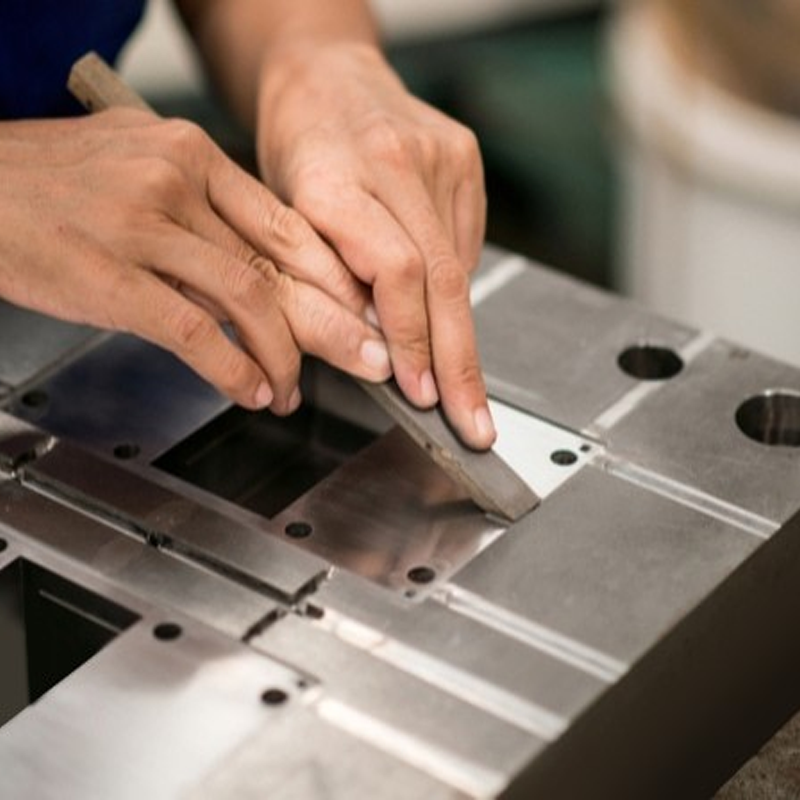Hello, and welcome! This is Sunny from Toolingsun, and today we’re diving into a key topic in the world of plastic injection molding: the impact of surface textures on molded parts. The surface texture of a plastic part affects far more than just its appearance and tactile feel—it plays a crucial role in numerous functional characteristics. These textures can influence the mechanical performance, chemical interactions, electrical properties, friction, corrosion resistance, and many other factors that are essential for ensuring the quality and longevity of your product. In this article, we’ll explore how these textures are applied, why they matter for your specific development goals, and how they can affect your project timeline, production efficiency, and overall cost.
Understanding Surface Roughness Classifications
Before we can discuss the various surface textures for injection molds, it’s important to first understand how surface finishes are categorized. One of the most widely recognized systems used in the industry is the classification system developed by the Plastics Industry Association (PIA), formerly known as the Society of the Plastics Industry (SPI). This system is the standard reference point when it comes to surface roughness, and it’s so pervasive that it’s commonly referred to as the “SPI gauge.”
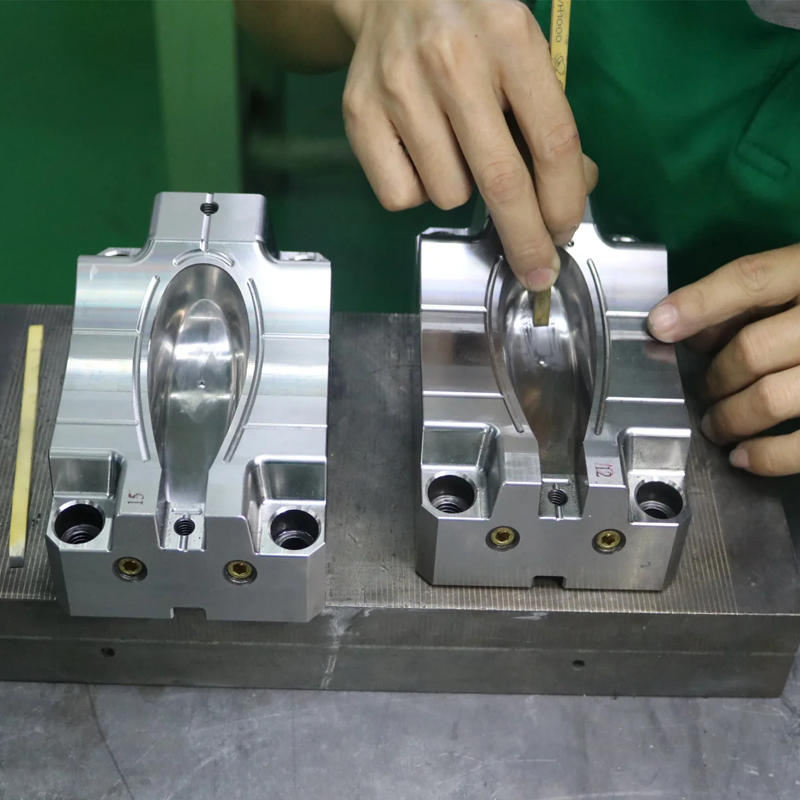
Injection Molding Surface Finish Categories
In the PIA’s classification system for surface finishes on injection mold tools, there are four primary categories: A, B, C, and D. Let’s break down these classifications and explore how they impact both the aesthetic and functional qualities of your molded products.
– Category A: The highest quality finish, typically achieved through diamond buffing. This results in a smooth, glossy finish, which is often ideal for producing optically clear plastics. It’s the preferred choice when superior surface quality is essential.
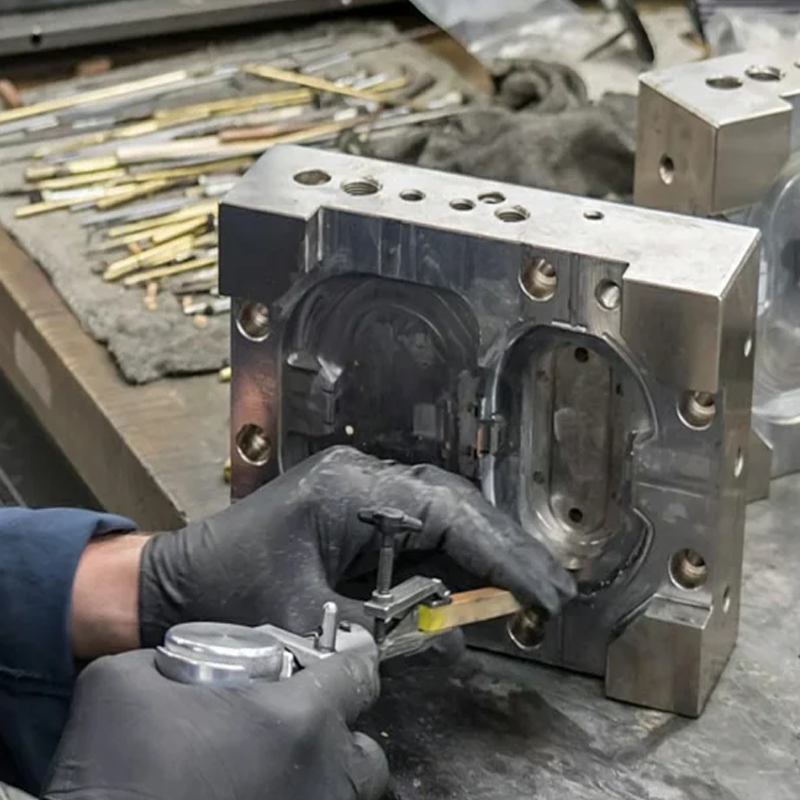
– Category B: This finish is achieved using sandpaper, leaving a semi-gloss surface with linear scratches that create a noticeable texture. Though not as refined as Category A, it is still suitable for applications where a fine surface is needed without the added cost of a high-gloss finish.
– Category C: Achieved using grit sanding stones, Category C finishes are rougher and more matte. This finish is often used for more industrial applications where aesthetic perfection is not the priority, but functionality is.
– Category D: The roughest of the finishes, achieved through abrasive blasting using glass beads or aluminum oxide grains. This finish creates a uniform and non-directional surface, ideal for producing matte finishes on industrial components.
The Impact of Surface Finish on Cost
One of the key factors that impacts the cost of a molded part is the surface finish. The more refined the finish, the higher the cost. Each step up in the classification system requires additional time, labor, and specialized tools, all of which contribute to the overall cost of production. Let’s explore the different finishing techniques used to achieve these various surface qualities.
Polishing
Category A finishes, which are polished using diamond buffing, are the highest grade of surface finish. This process uses fine diamond pastes to achieve a mirror-like gloss that is particularly valued in industries requiring high-quality, optically clear parts. The polishing process involves using a rotary tool to create random, non-linear patterns that scatter light, giving the surface an evenly reflective appearance with no directional waviness.
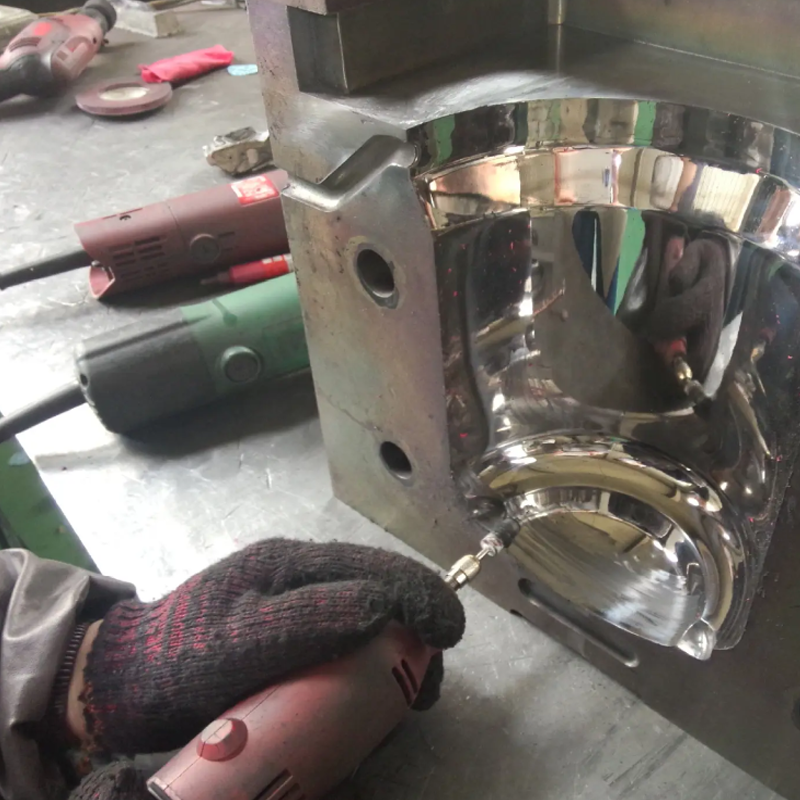
There are three sub-categories within the A-grade finish, each corresponding to a specific degree of refinement. The Ra value (roughness average) is often used as a reference for these finishes, with A-3 typically having a Ra of 2-3, indicating a very flat and polished surface.
Sandpaper
Category B finishes are applied using sandpaper in a back-and-forth motion, leaving behind linear scratches that create a distinctive pattern. While these finishes are less glossy than Category A, they are ideal for applications where the finish needs to hide minor tool marks and imperfections without incurring the costs associated with higher-grade finishes. Sanding grit varies from 600 for B-1, to 400 for B-2, and 320 for B-3, with each grit level producing a different level of smoothness.
Grit Stone
For a more textured, matte finish, Category C is achieved by using grit sanding stones. This method is more aggressive than sandpaper, leaving a rougher, more pronounced surface. It’s suitable for applications where the primary concern is functionality rather than aesthetics, and it’s often used to quickly remove tooling and machining marks.
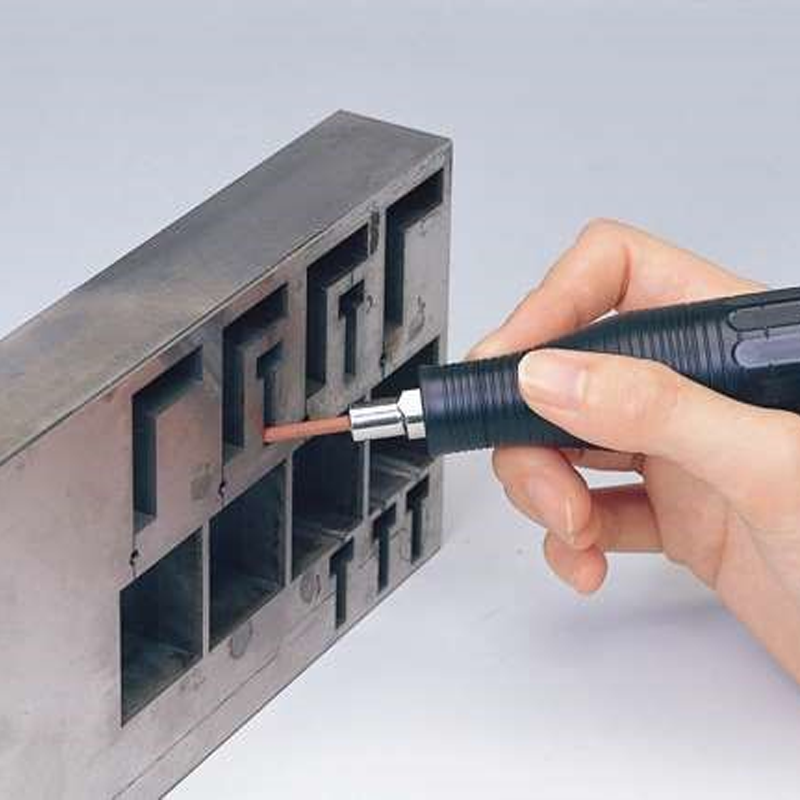
Abrasive Blasting
Category D finishes are the roughest of all. These finishes are achieved by abrasive blasting, where materials such as sand or glass beads are used to create a uniform, non-directional texture. This method is typically used to create a dull or flat surface that is often utilized in industrial or functional components.
Chemical Engraving
In addition to mechanical methods, surface textures can also be applied to mold tools through chemical engraving or photoetching. This process uses masks to create intricate patterns on the tool wall, and a chemical is then applied to selectively etch the exposed metal. The result is a wide variety of textures, including patterns that mimic natural materials such as stone, wood grain, or leather.
However, it’s important to note that creating highly detailed textures in mold tools may require an increase in the tool wall’s draft angle. This adjustment helps ensure that the molded part can be easily released from the tool without interference from the added texture.
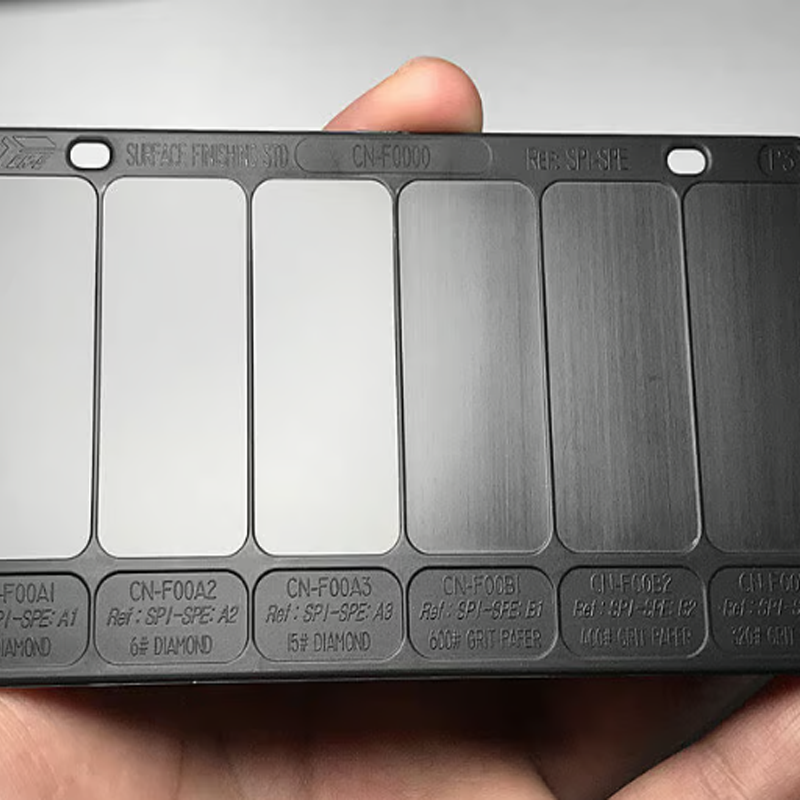
Surface Treatments for Tooling
Beyond mechanical abrasion and polishing, several surface coatings can be applied to mold tools to enhance their performance. These coatings not only affect the tool’s surface texture but also improve its mechanical and chemical properties. Here are a few of the most common treatments:
- Plating: Chrome plating is one of the earliest and most well-known surface treatments. It increases hardness, helping molds withstand abrasion when using glass-filled resins. However, it’s not resistant to chemical outgassing when working with certain materials like PVC. Electroless nickel plating offers similar benefits, with the added advantage of uniform coating across all tool features, including deep cavities.
- Physical Vapor Deposition (PVD): This method involves applying thin layers of ceramic or metal coatings, such as Titanium Nitride (TiN), to the tool surface. PVD coatings offer high durability, increased hardness, and better corrosion resistance, making them ideal for molds used with abrasive resins.
- Chemical Vapor Deposition (CVD): CVD coatings are thicker than PVD coatings and provide the highest level of wear resistance. Diamond coatings are often applied using this technique, offering exceptional hardness and tool life.
Understanding Gloss in Injection Molding
Gloss is a key factor in determining the final appearance of your molded parts. Gloss refers to the reflectance of a surface compared to a polished black glass standard, and it is measured using a gloss meter. The gloss unit (GU) scale is used to describe a surface as high-gloss, semi-gloss, matte, or flat. This is essential when specifying the look and feel of your injection molded parts.
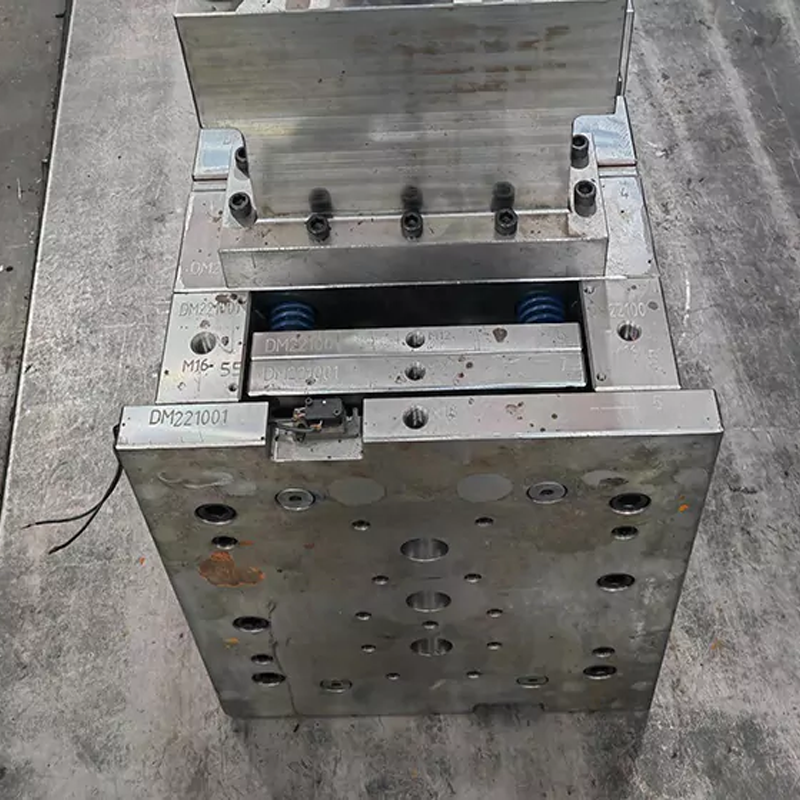
Conclusion
Understanding the various surface textures and finishes available in plastic injection molding is crucial to ensuring that your parts meet both functional and aesthetic requirements. Whether you’re working on high-performance industrial components or consumer-facing products, the right surface texture can greatly influence the performance, appearance, and cost of your molded parts.
At Toolingsun, we specialize in providing high-quality tooling and injection molding solutions tailored to meet your project’s needs. Our team is dedicated to ensuring that your products are produced efficiently, cost-effectively, and to the highest standards. If you’re ready to take your project to the next level, reach out to us today for more information on how we can assist with your injection molding needs.

